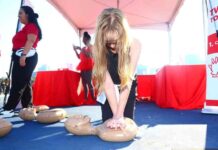Optimal Rest Days Between Workouts: A Complete Guide
Taking a NO days off mentality to achieve your fitness goals may provide short-term benefits, but it can ultimately lead to the risk of injury in the long run. This mindset is reminiscent of old-school gym culture and is as outdated as a rusty barbell. While you can attempt to pick it up and give it a few reps, adopting a more modern approach is undoubtedly more beneficial in the current fitness landscape.
Rest days are not a sign of weakness. It can be challenging to accept this if you are passionate about training and have ambitious goals to reach. You may be wondering how many rest days you truly need to optimize your recovery, especially when training for a race or aiming for a personal record. Balancing rest and training is essential for long-term success.
Kurt Ellis, C.S.C.S., owner and coach at Beyond Numbers Performance, emphasizes the importance of maximizing rest days to plan a well-rounded routine and return to workouts feeling stronger. While it is possible to train every day by managing intensity and impact, there is a distinction between what you can do and what you should do in terms of rest.
Rest days should not be viewed as days of laziness. Instead, they are opportunities to decompress from stressors and recharge physically, mentally, and socially. It is crucial to understand that rest days do not mean complete inactivity but rather a reduction in training intensity to allow the body to recover and adapt effectively.
How Many Rest Days Do You Need?
In general, everyone should incorporate at least one rest day per week into their training schedule. However, the optimal number of rest days depends on individual training programs. Varying intensity throughout the week is key to ensuring adequate recovery. This can include high-intensity days, low-intensity days, and moderate-intensity days interspersed with rest days.
Following a pre-made training plan can help take the guesswork out of determining the appropriate number of rest days based on the intensity and volume of workouts. Consulting with a personal trainer or using a Workout Finder tool can provide personalized recommendations for structuring your training program.
The Benefits of Taking a Rest Day
There are several compelling reasons not to skip rest days in your training regimen. Avoiding overtraining is essential to prevent fatigue, reduced reaction time, and other negative consequences that can arise from excessive exercise. Incorporating rest days helps mitigate the risk of injuries by allowing the body to recover and repair from the stress of training.
Rest days are also crucial for muscle repair and growth. Allowing muscles to rebuild after intense workouts is essential for making gains, especially for those with aesthetic goals. Additionally, regular rest days improve overall performance by providing the body with the necessary time to recover and adapt to training stimuli.
Mental recharging is another significant benefit of rest days. Preventing burnout and maintaining motivation are essential aspects of long-term training success. Rest days offer an opportunity to recharge both physically and mentally, ensuring that you return to your workouts feeling refreshed and focused.
How to Recover On Your Rest Day
Maximizing recovery on rest days involves understanding the difference between rest days and active recovery days. While rest days involve minimal activity, active recovery may include low-intensity movement to promote blood flow and nutrient delivery for recovery. Engaging in activities like walking, meditation, breathwork, light stretching, or getting a massage can enhance recovery on rest days.
Avoiding activities that are overly strenuous or physically demanding is crucial during rest days. While it may be tempting to engage in active pursuits like playing sports or performing household chores, these activities can detract from the restorative benefits of true rest. By focusing on relaxation and gentle movement, you can optimize your recovery and prepare your body for upcoming workouts.
Incorporating a brief mobility and recovery workout on rest days can help maintain flexibility, posture, and joint health. Performing exercises like the World’s Greatest Stretch, Cat-Cow, Dynamic Pigeon, and Tabletop Bridge for short intervals can enhance blood flow and range of motion without overexerting yourself. Remember to prioritize gentle movement and relaxation to support your body’s recovery process effectively.
Conclusion
Prioritizing rest days in your training routine is essential for optimizing recovery, preventing injuries, and enhancing overall performance. By incorporating adequate rest and recovery strategies, you can support your body’s adaptation to training stimuli and achieve your fitness goals more effectively. Remember that rest days are not a sign of weakness but a necessary component of a balanced and sustainable training program. Embrace the benefits of rest days and allow your body the time it needs to recover, grow, and thrive in your fitness journey.

















